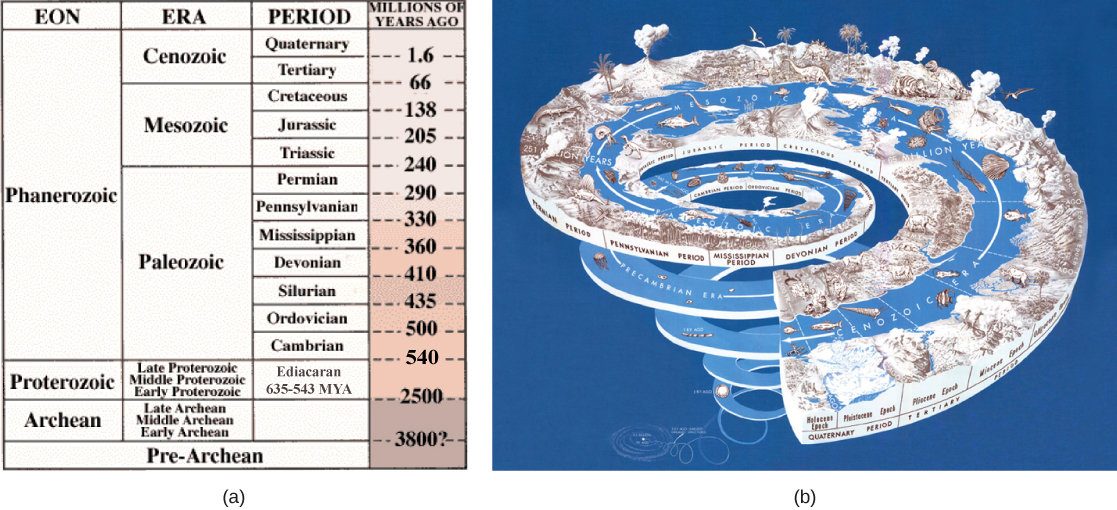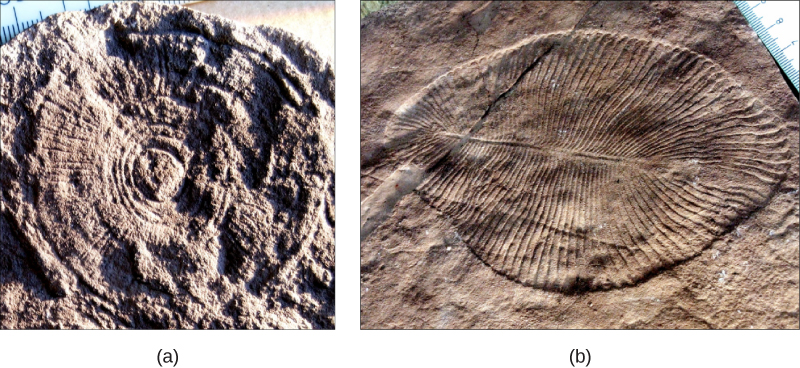| << Chapter < Page | Chapter >> Page > |
Many questions regarding the origins and evolutionary history of the animal kingdom continue to be researched and debated, as new fossil and molecular evidence change prevailing theories. Some of these questions include the following: How long have animals existed on Earth? What were the earliest members of the animal kingdom, and what organism was their common ancestor? While animal diversity increased during the Cambrian period of the Paleozoic era, 530 million years ago, modern fossil evidence suggests that primitive animal species existed much earlier.
The time before the Cambrian period is known as the Ediacaran period (from about 635 million years ago to 543 million years ago), the final period of the late Proterozoic Neoproterozoic Era ( [link] ). It is believed that early animal life, termed Ediacaran biota, evolved from protists at this time. Some protest species called choanoflagellates closely resemble the choanocyte cells in the simplest animals, sponges. In addition to their morphological similarity, molecular analyses have revealed similar sequence homologies in their DNA.

The earliest life comprising Ediacaran biota was long believed to include only tiny, sessile, soft-bodied sea creatures. However, recently there has been increasing scientific evidence suggesting that more varied and complex animal species lived during this time, and possibly even before the Ediacaran period.
Fossils believed to represent the oldest animals with hard body parts were recently discovered in South Australia. These sponge-like fossils, named Coronacollina acula , date back as far as 560 million years, and are believed to show the existence of hard body parts and spicules that extended 20–40 cm from the main body (estimated about 5 cm long). Other fossils from the Ediacaran period are shown in [link] ab .

Another recent fossil discovery may represent the earliest animal species ever found. While the validity of this claim is still under investigation, these primitive fossils appear to be small, one-centimeter long, sponge-like creatures. These fossils from South Australia date back 650 million years, actually placing the putative animal before the great ice age extinction event that marked the transition between the Cryogenian period and the Ediacaran period. Until this discovery, most scientists believed that there was no animal life prior to the Ediacaran period. Many scientists now believe that animals may in fact have evolved during the Cryogenian period.

Notification Switch
Would you like to follow the 'Biology' conversation and receive update notifications?